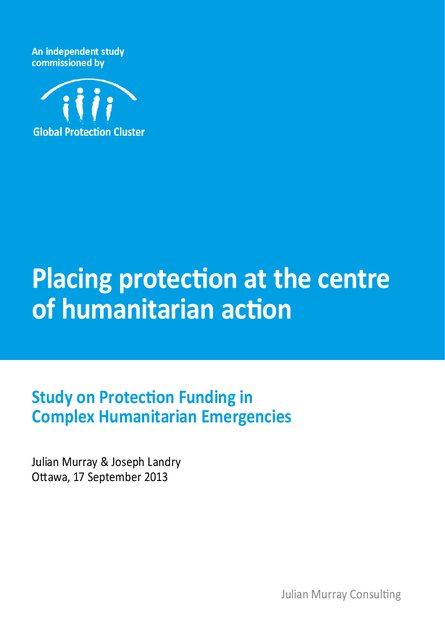Study on Protection Funding in Complex Humanitarian Emergencies

When we looked at the funding trends to all areas of protection within the purview of the Cluster, and over a longer period (2007-2012), we found that protection is usually underfunded in relation to the amounts requested in the consolidated appeals, and “more underfunded” relative to most other clusters. But we also found that overall protection funding (including the amounts flowing outside the appeals) has remained steady since at least 2010, and that funding relative to appeals picked up in 2012. The picture is made more complex by the fact that so much protection funding is not recorded as such, and there are significant variations between countries, as well as between years. The problem then is not so much that protection funding is reducing, but that it flows in different ways, it fluctuates, and also concentrates in some emergencies more than others. During the course of the study, evidence moved us away from the original hypothesis that protection is simply underfunded and needs renewed advocacy, towards an attempt to understand some of the drivers behind the observed funding trends. Rather than looking toward the donors as the main reason for these trends, we ended up reflecting also on how protection funding can be stabilised, better managed by protection actors and donors alike, and eventually increased.